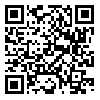Volume 13, Issue 4 (2022)
LRR 2022, 13(4): 431-465 |
Back to browse issues page
Download citation:
BibTeX | RIS | EndNote | Medlars | ProCite | Reference Manager | RefWorks
Send citation to:



BibTeX | RIS | EndNote | Medlars | ProCite | Reference Manager | RefWorks
Send citation to:
Amirian S M R, Bonjakhi M, Amirian S M. Investigating Language Learners’ Satisfaction in Private Language Schools: A Factor Analysis of EduQual Model of Quality Assessment in Educational Contexts. LRR 2022; 13 (4) :431-465
URL: http://lrr.modares.ac.ir/article-14-47430-en.html
URL: http://lrr.modares.ac.ir/article-14-47430-en.html
1- Associate Professor of TEFL, Hakim Sabzevari University, Sabzevar, Iran , smr.amirian@gmail.com
2- PhD Candidate in TEFL, Hakim Sabzevari University, Sabzevar, Iran
3- Master of Management MBA, Payam Noor University, Tehran, Iran
2- PhD Candidate in TEFL, Hakim Sabzevari University, Sabzevar, Iran
3- Master of Management MBA, Payam Noor University, Tehran, Iran
Abstract: (1767 Views)
The aim of the present study is to examine the views of language learners receiving English language teaching services about the quality of educational services and institutions’ facility. One of the models that is used to assess the quality of education is EduQual model, which was used to design a questionnaire consisting of 28 items. The participants of this study were 254 language learners of a private English language institution, and after receiving the questionnaires, 200 questionnaires were approved and analyzed. In quantitative phase of the study, a quantitative review of the questionnaire, as well as, the fitness of this model was investigated through factor analysis in AMOS. The results of the quantitative part of this study by two indicators confirmed the fitness of the model (RMSEA and CFI), however, the other two indicators of the fitness indices were not at the desired level (p-value for Chi square and CMIN / DF). The factor load for all items of this questionnaire was also evaluated acceptable and the correlation coefficients between the aspects were in the appropriate range. In interviews, this model was mostly accepted, but some aspects of this questionnaire were questioned. The interviewees also added other factors to the quality of English language institutions that were discussed in this study. Due to the large scope of institutions, the need to create a special model for quality assessment in English language institutions in this study was strongly suggested.
Research Questions
The main question of the present study is to investigate if it is feasible to hire EduQUAL model on Iranian Institutional context to evaluate the quality of educational services?
- Introduction
Research Questions
The main question of the present study is to investigate if it is feasible to hire EduQUAL model on Iranian Institutional context to evaluate the quality of educational services?
- Literature Review
- Methodology
- Results
- Discussion
Send email to the article author
| Rights and permissions | |
 |
This work is licensed under a Creative Commons Attribution-NonCommercial 4.0 International License. |









